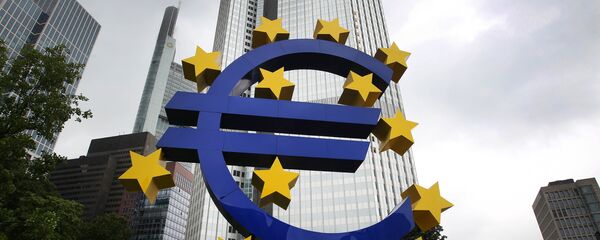Kristian Rouz — Multiple reports suggest the EU and the Eurozone, in particular, are facing a threat of a recession this year due to the slowdown in German exports and GDP growth.
Eastern European member states, however, could become the EU's new economic powerhouse, as these countries continue to steadily outperform their Western peers in term of GDP, investment, and labour productivity.
Meanwhile, the German economy slipped into the red at the end of 2018, and French GDP rose 1.1 percent in Q1 after a meagre 1-percent growth in 4Q18.
"Despite the fact that Central and Eastern Europe is still struggling with low incomes in some of its regions, high economic growth rates have been recorded in this part of the EU. In contrast, older member states in Southern Europe (Portugal, Spain, Italy and Greece) have lagging regions marked by low economic growth", Romanian economists Alina Bârgăoanu and Clara Volintiru wrote in a recent blog post for the London School of Economics.
There are several reasons why Eastern Europe keeps outperforming its Western counterparts, which include looser regulations and limited government interference in the economy, looser fiscal policies, and lower indebtedness to the state, corporate, and household levels.
READ MORE: German Gov't Cuts GDP Growth Forecast Again Amid Rising Fears of Recession
However, last quarter's economic growth has slowed slightly in the Czech Republic (to 2.4 percent from 2.6 percent in 4Q18), Hungary (4.9 percent vs 5.1 percent), and Poland (4.4 percent vs 4.9 percent). Meanwhile, the GDP growth rate remained steady in Bulgaria (3.2 percent), Romania (4.1 percent), and Slovakia (3.6 percent).
These differences are largely explained by the differences in these countries' trade relations with other EU member states. Economists have long suggested that a slowdown in Germany would inevitably weigh on GDP growth across Eastern Europe.
"Their export-oriented economies, embedded as they are in the German manufacturing export base, make them vulnerable to any decline in global and EU trade", Bârgăoanu and Volintiru wrote.
Additionally, lower levels of household debt and a socialist tradition of saving and making payments in cash have supported consumer spending at modest, yet sustainable levels — as opposed to the boom-bust credit cycle characteristic of Western societies.
"Growth in Central Europe appears to have held up well as strong domestic demand offset the impact of continued weakness in Eurozone export markets", Liam Peach of London-based Capital Economics said.
Additionally, the workforce in Central Europe — along with the costs of living — remains relatively cheap, supporting a sustainable influx of non-financial sector investments. For example, in Hungary, German car-maker BMW AG is starting work on its new $1.2-billion factory this year — and similar projects are happening across the region.
READ MORE: Former German Finance Minister Seeks Full-Fledged EU Economic Reform
Central and Eastern Europe has also lost a significant fraction of its population due to outbound migration — with many Poles, Romanians, Czechs, and Slovaks moving the Germany and the UK over the past 15 years.
"They have also experienced big population losses (through outward migration and demographic decline), so per capita figures obviously look better", Bârgăoanu and Volintiru wrote.
Although high rates of emigration caused economic problems at first, today the situation is drastically different. The rapid expansion in manufacturing across Eastern Europe has caused severe labour shortages, pushing effective wages higher, and spurring consumer spending. The latter has led to a boom in the services sector.
Economists expect Central and Eastern Europe to defy the global economic challenges rattling the majority of advanced and Third World economies — from the US to China, and from Norway to South Africa.
"Hungarian economic growth is expected to stand out among the countries our group operates in, though the others won't be bad either", Laszlo Bencsik of the Hungarian bank OTP Bank Nyrt said. "These countries will probably keep growing, not as fast as Hungary but relatively dynamically".
Today's global economic challenges include trade tensions, skyrocketing debt and non-performing loans, along with brewing banking sector crises; higher central bank interest rates, and wage stagnation — none of which appears to pose a concern for the former Eastern Bloc members.





